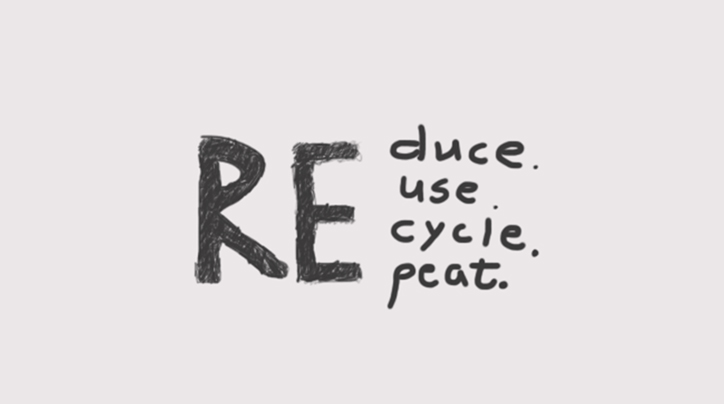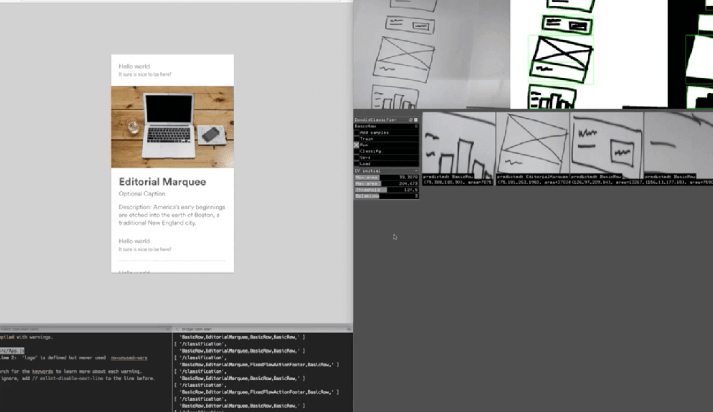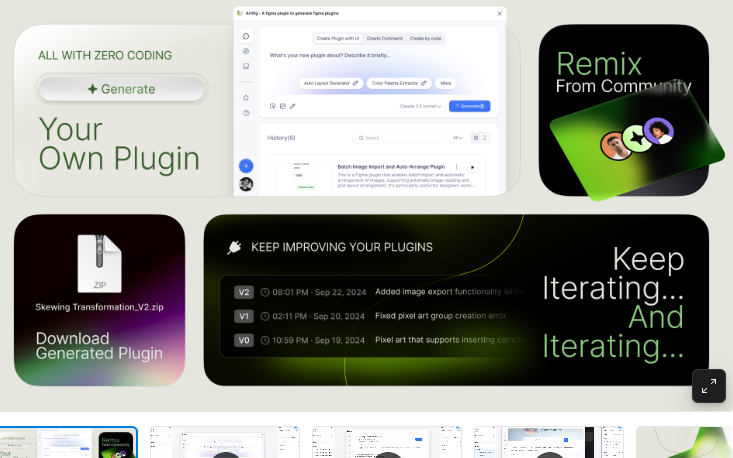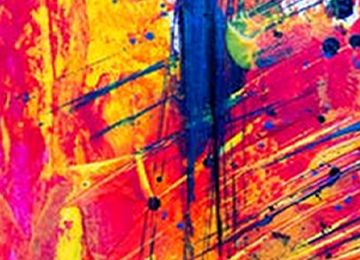blog
AI Design Trends That Will Shape the Future in 2025

Artificial Intelligence is evolving beyond just data analytics and Machine Learning. Its impacts are seen in every industry, whether it’s digital marketing or the creative industry, like web design. According to a report by HubSpot, almost 93% of designers have used AI tools in some form or another related to web design tasks. As more creative personnel embrace AI, a report suggests, around 55% of the market worldwide sees Generative AI (GEN AI) as the top consumer trend in 2025.
The role of AI in web design is not just about helping designers with creative tasks. It’s more about how you create and how it interacts, and delivers your message to the consumer. For designers, consistency, the latest web design trends, and engaging creatives are all that is required to stay relevant. AI will give an edge to take your creativity to the next level, personalization, and speed.
As we move towards the peak era of AI, here are some of the AI Web Designing trends that will redefine the future of design across industries.
Trend #1: Hyper-Personalization With Predictive Design
The integration of AI in UX is certainly one of the major design trends that’s reshaping user journeys through real-time, data-driven personalized experiences. Whether you have a inhouse designing team or you are working with a creative design agency, AI’s ability to learn large amounts of user data will bring a new wave of personalization in design.
- This will allow AI to build adaptive interfaces that automatically generate designs based on human preferences.
- Dynamic Content Rendering based on consumer subtle behavior.
- Custom interfaces for different individuals within the same platform.
- AI designs will suggest colors, layout, and themes based on user profiles you are targeting.
Hyper-personalization enhances consumer engagement by offering a highly targeted experience to each consumer. As more than 71% of consumers want businesses to deliver personalized interactions, hyper-personalization will be a key trend in 2025.
Trend #2: Designing Prototypes, Concepts, and Creative Ideas Using AI
AI Design, ideation, and prototyping will completely change the approach for designers, allowing them to explore endless creative possibilities.
The best example is Airbnb, which is using AI in its design process to generate code from low-fi wireframe sketches. The main idea behind this is to train a machine to recognize different components and generate design ideas and concepts according to that.

Image Source: YouTube
Currently, designers are using AI to:
- Generate Text-To-Image: Inputting prompts to produce visual concepts.
- Image-To-Image: Generating iterations and variations using different visual formats.
- Text-To-Text: Generating text elements, translation that complements the overall design.
- Text-To-Videos: Using text descriptions to generate video content.
Design prototyping Trend in 2025 will allow designers to:
- Design multiple variations for clients.
- Using AI as a co-creator to overcome creative blocks.
- Explore endless ways to generate designs that are yet to be explored.
Trend #3: Building Custom Design Tools With AI
The future of AI in design is moving towards a consolidation era, which means only a few custom designs and AI models will be used to carry out different design processes. Today, designers and developers are relying more on AI tools to create designs.
Just by entering a prompt, these tools can create several designs of multiple variations, bridging the gap between AI-powered graphic design and development.
The best example can be Artifig, which allows users to generate custom plugins. Using natural language, it assists designers in creating their own plugins without any extensive coding knowledge required.

Image Source: Artifg
Trend #4: AI-Driven Maximalism Will Gain Limelight
Although this trend is already gaining popularity across creative industries, in 2025, it will be a part of almost every design you see. It is used to craft highly intricate, conceptually rich, and highly immersive designs with maximalist design aesthetics.
Design Maximalism can be described as “more and more” aesthetic, as it can evoke strong emotions and grab consumer attention for a long time.
Note: As AI is expected to scale high-quality data to maximalist visuals, Brands must use it wisely to avoid losing consistency and brand fragmentation. It must be used to enhance authenticity, not to replace it.
Apart from this, Artisanal Minimalism is also emerging as a creative trend:
“It focuses on simplicity, authenticity, human touch, and Visual Dynamism to capture the attention of the audiences who prefer value, quality, and purpose-driven designs over complete automation.”
Trend #5: Zero UI and Invisible Design
Well! This is interesting as Zero UI and invisible design are going to be the viral AI design trends of 2025.
Zero UI means a digital environment where interactions happen without any visual buttons, menus, or interfaces. It allows users to interact through gestures, voice motions, or simply being present instead of clicking and tapping. The main focus of Zero UI design is to focus on emanating cognitive burden rather than showcasing features.
Invisible Design is a unique design approach that AI understands context and delivers a seamless experience based on user requirements. In simpler words, it’s an extreme intuitive design method where users dont need to consciously think about the design itself, creating a more natural interface rather than just focusing on aesthetics.
For instance, websites might auto-adjust layout and content based on the user’s voice tone, facial expression, or device usage pattern. Micro-interactions will become smarter, anticipating needs without user input.
This trend is driven by:
- Ambient computing
- Sensor integration
- Behavioral AI
Trend #6: Ethical AI and Value Sensitive Designs Will Be Preferred
Ethics are becoming an essential part of central design principles. As AI is highly prone to biases and misinformation, brands are now trying to include ethical principles directly into AI-powered design experiences.
This shift is caused by:
- Users want transparency; they want to know how and where AI is involved.
- Growing concern over data used by AI graphic design tools.
- Accountability Issues.
According to a report, only 47% of the people worldwide believe that AI companies protect our personal data.
As a result, Valuable Sensitive Designs (VSD) will be a main trend, businesses must look out for. Fairness, Inclusion, and Autonomy must remain the center of every design process.
Highlighted Components of Ethical AI Design
- Explainable AI: Making AI decisions more understandable for humans.
- Bias Mitigation: Eliminating bias issues like algorithm-based or manual to avoid errors and discrimination.
- Inclusive Datasets: Creating a diversity where data must be equal for everyone.
Trend #7: Generative AI For Visual Assests Will Be Used More
Generative AI describes algorithms that help AI design tools to create images, audio, text, or anything you require. According to a report, the market for Generative AI alone is almost $44.89 billion. For visual assets, it will be a year of tremendous growth, as Generative AI will help designers and creative design agencies create imagery, illustrations, and designs on a large scale.
- Instant Assets Creation: Prompt brief and get dozens of logos, UI elements within seconds.
- Eliminating time on visual repetitive tasks.
- Adaptive asset for different screens and platforms.
- Multiple manually sounding design variations.
- Real-time visual feedback.
Trend #8: Emotionally Advanced Typography and Visuals
Emotionally responsive typography ensures visuals connect to the audience’s emotional and current state. Technologies such as biometric sensing allow interfaces to respond to users’ cognitive and emotional responses. AI typography ensures all the elements within product designs, such as strokes, decoration, and text, can shape the ideas of users.
- Emotion Aware Typography: Fonts can expand or contract based on reading pace or patterns of the users.
- Adaptive Color Palettes: Colors change based on environmental lights, time zones to give offer a more satisfying display of the design.
Moreover, custom typography design is serving a specific need and moving away from a one-size-fits-all approach. AI technologies can evaluate users’ behavior and preferences and easily customize designs to a specific user’s needs.
For instance, AI is used in e-commerce to create tailored product advertisements with custom packaging, which would yield higher interaction and sales. AI functionalities have also been added in Canva and Figma, where AI assists designers and AI design agencies in making quicker and optimal decisions by offering color and font pairing suggestions that reflect the input given and design trends.
Conclusion: 2025: A Year of AI Design Trends
Well! Trends come and go, but what matters the most is how you utilize them before others do. AI is here to transform how we approach creativity and how far we can go. From Hyper-Personalization to Emotionally Advanced Typography, these are some of the best AI design trends that will rule 2025 and beyond. Whether you are an in-house creative team or a creative design agency, it’s time to take an early-mover advantage and contribute meaningfully to technology and human creativity.
Want to stay up on AI creative design trends? Choose Tangence, we are an AI creative design agency that ensures your brand stays ahead of the curve with future-ready visuals and strategies. Whether it’s designing hyper-personalized experiences or emotionally resonant designs, we promise to merge innovation with impact making every design smarter, faster, and unforgettable.
